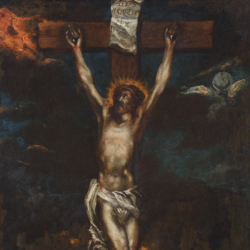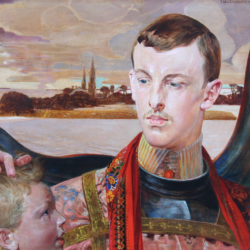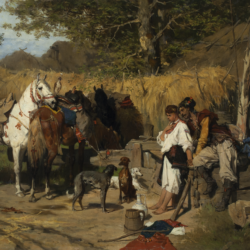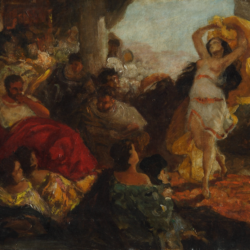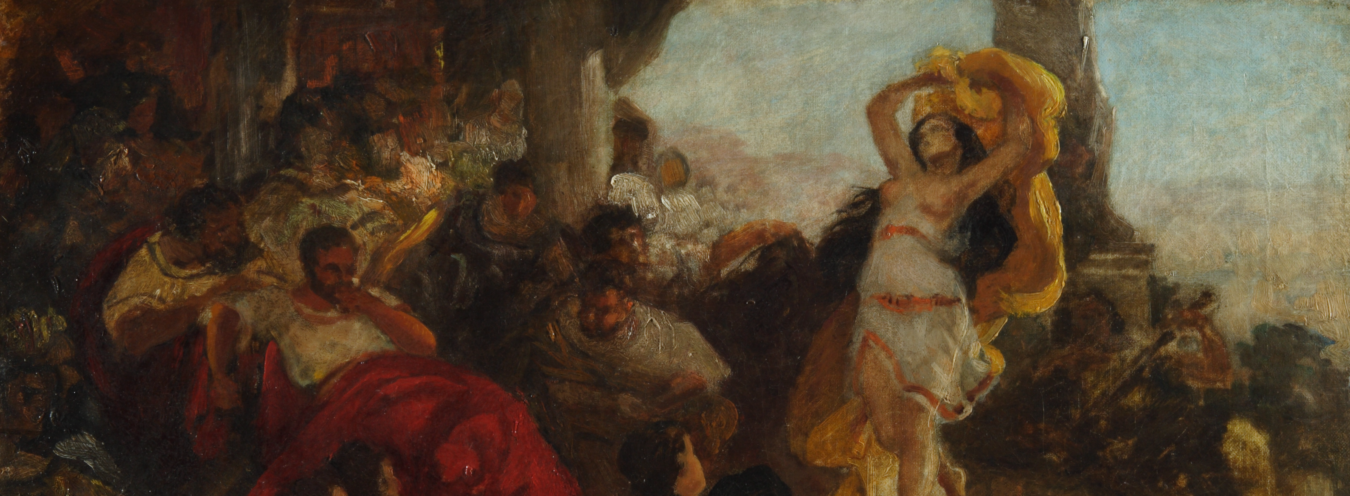
Violence and eroticism II (Psychoanalysis)
How does Urszula Benka explain the perverse inclinations of Sienkiewicz, and perhaps even of the entire epoch? She makes a subtle allusion to Freud and psychoanalysis, but when she was writing her text in 1994, she a bit too hastily assumed that “the European affair of humanities with psychoanalysis” had omitted Polish culture, so Freud could not have influenced Sienkiewicz in any way. Let us note, however, that we are discussing the unconscious, so no conscious influence was necessary; still, it was possible to offer explanations along the lines of Freud and other researchers of human sexuality: Richard Krafft-Ebing, John Symonds, Havelock Ellis. In other words, Sienkiewicz could have been subjected to the mechanisms discovered by psychoanalysis, simultaneously not being aware of their existence. Benka, however, chooses a different interpretation, far more conciliatory towards the Polish tradition and literary practice. She assumes that the saturation of the erotic sphere with the torment and suffering of women, which is done by Sienkiewicz, is a variation on the baroque religious imagination, linking mystic ecstasy with erotic experiences. The torments caused (to oneself or to the object of one’s feelings) in the act of the love of God were motivated by masochism or sadomasochism. Such was the case of the author of the Trilogy: “Sienkiewicz’s sadomasochism is in its essence a sacred act […].”[1]
Replacing Freud with Zbigniew Kuchowicz, whose works on baroque Benka refers to, weakens the logic of her argument. After all, we want to remain – and it seems that Urszula Benka also wants this – in the sphere of unconscious inclinations, and not in the area of intellectual or aesthetic choices based on knowledge, or in this case – based on the knowledge about the past. That is why we need to return to Freud, and to the earlier intuitions linking love with fight, and eroticism with violence. The connection between war and eroticism has been noticed by other authors, including Empedocles, a Greek philosopher. In his treaty, which was written five centuries before Christ and which has been only partly preserved, Empedocles distinguished two powers that ruled the world: the power of love (philia) and the power of fight (neikos). They remain in a dialectical relation: when love weakens, quarrels appear. When the stamina of the fighters decreases, love facilitates reconciliation. Empedocles was a favorite writer of the modernists, and – earlier – of Friedrich Hölderlin. He was also evoked by Nietzsche, for instance, in his essay devoted to Schopenhauer (“Schopenhauer as Educator”) and by Freud in his various notes[2] as well as in his major texts. Sarah Kofman, a French philosopher, discussed the similarities linking Empedocles’s categories with the universal drives in Freud’s theory: the life drive and the death drive (destruction). According to her study Freud and Fiction, the death drive is manifested in the inclination for aggression. The order of the world is a function of two alternate activities: the internalization of the instinct of death by an individual human subject and the development of the instinct of love, which allows people to form communities.[3] Following Freud, Kaufman emphasizes that Eros himself is infected with death – and thus with aggression – and the ideal relationship, based on solely love, is only imaginary.
What do we know about sadism in its non-literary clinical sense? According to Laplanche and Pontalis, primary sadism is independent of the sphere of drives. Only when the identification with the suffering object takes place, and this object derives pleasure out of suffering, can we talk about sado-masochism as a sexual perversion.[4] It seems that at least some of the protagonists created by Sienkiewicz bear the hallmarks of pathological behavior.
Quoting the pioneer works of Kraft-Ebbing in his Three Essays on the Theory of Sexuality, Freud reminds about the distinction between passive perversion (masochism) and active perversion (sadism). And then he writes:
The roots of active algolagnia, sadism, can be readily demonstrable in the normal. The sexuality of most men shows a taint of aggression, it is a propensity to subdue, the biological significance of which lies in the necessity of overcoming the resistance of the sexual object by actions other than mere courting. Sadism would then correspond to an aggressive component of the sexual impulse which has become independent and exaggerated and has been brought to the foreground by displacement. The conception of sadism fluctuates in the usage of language a mere active or impetuous attitude towards the sexual object to the exclusive attachment of the gratification to the subjection and maltreatment of the object. Strictly speaking, only the last extreme case has a claim to the name of perversion.[5]
Moving sadism to the limits of the socially acceptable norm, Freud links its opposite – masochism – with the appearance of various mental complexes:
It can often be recognized that the masochism is nothing but a continuation of the sadism turning against one’s own person in which the latter at first takes the place of the sexual object. Analysis of extreme cases of masochistic perversions shows that there is a cooperation of a large series of factors which exaggerate and fix the original passive sexual attitude (castration complex, conscience).[6]
Judging on the basis of this fragment (and other fragments as well), it is difficult to conclude what is of primary and what is of secondary (additional) value; whether complexes lead to masochism or vice versa: the primary masochism leads to neurotic psychological reactions. Still, we cannot fail to notice the fact that Freud tries to “break the spell” binding the two inclinations, emphasizing that, in a mild form, they are ways of manifesting sexual activities in normal sex life. I do not examine here whether the later schools of psychoanalysis (e.g. feminist psychoanalysis) invalidated this theory, or – just on the contrary – strengthened it. I treat this as still valid. The question I formulate is whether the forms of sexual activity that Sienkiewicz bestows upon his protagonists constitute the basis for the conclusions concerning his own sexuality, which might be one of the sources of his literary imagination. They probably do, to some extent.
Przypisy
- Ibidem, p. 107.
- The reference to Empedocles can be found, among others, in the essay entitled “Analysis Terminable and Interminable,” where Freud again returns to the issue of “a great riddle of sex” (I used the following source: S. Freud, The Standard Edition of the Complete Psychological Works of Sigmund Freud, translated by. J. Strachey, A. Freud, vol. 23, London 1964, electronic version: https://www.sas.upenn.edu/~cavitch/pdf-library/Freud_Analysis_Terminable_Interminable.pdf; accessed: 2017–06–03).
- S. Kofman, Freud and Fiction, translated by S. Wykes, Cambridge 1991, p. 38.
- J. Laplanche, J.B. Pontalis, The Language of Psychoanalysis, with an introduction by D. Lagache, translated by Donald Nicholson-Smith, London 2006 [1988], pp. 400-404.
- S. Freud, Three Essays on the Theory of Sexuality, translated by A. A. Brill, New York and Washington, 1920, p. 25
- Ibidem, p. 25.






